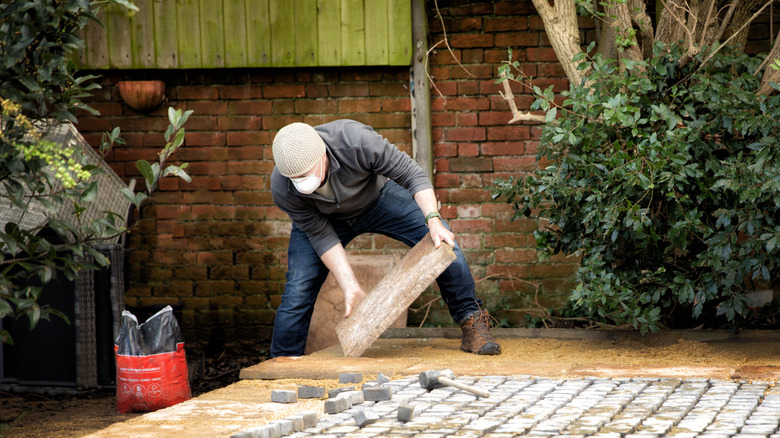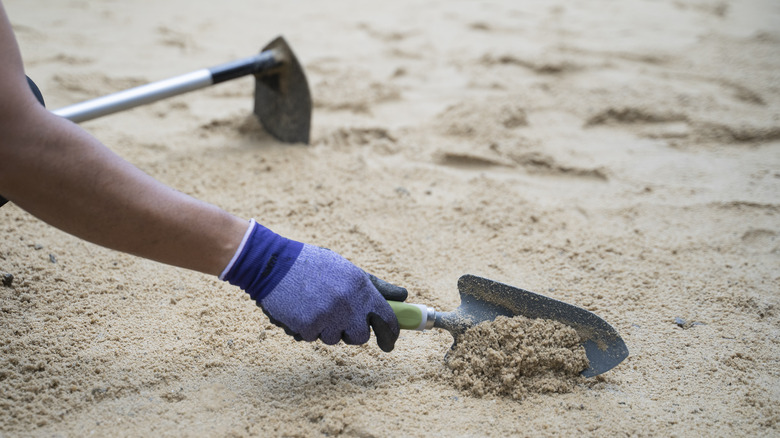Common Mistakes To Avoid When Laying Pavers In Your Outdoor Space
Pavers offer an easy way to make your outdoor space more usable. With pavers, you can stroll around and spend time in your backyard without getting your feet wet. Pavers also afford a safe and stable place to outfit the yard with furniture, a grill, and other essential outdoor items. But to achieve this stability, you need to install pavers properly and avoid making common DIY hardscaping errors. For example, when installing outdoor flooring over a grassy yard, you may be tempted to forgo excavating and prepping the base for your pavers. This is a common mistake that can come back to hurt you down the line. That's because without a strong base, your pavers are not stable enough to support the foot traffic — or any items you place on them.
Another common DIY mistake is to use only sand or dirt beneath the pavers. This is also a grave error because it deprives the pavers of stability and allows them to heave and sink easily. Yet another dangerous omission is to not check for underground utilities before excavating — the last thing you want is to damage a gas line or water pipe with your shovel. Failing to properly grade and slope the base away from your home's foundations is another easy misstep that can cause runoff to flow where it shouldn't. These errors are all related to each other, stemming from an incorrect approach, or taking shortcuts, when preparing the paver base. Below, we'll show you how to avoid these pitfalls and prepare a paver base properly.
How to prepare a paver base properly
After confirming that no utilities are in your path, mark the layout of the paved area with white paint. It's important to widen the marked perimeter on all sides by about half a foot — this gives you more room to maneuver when you lay the pavers. Your next task is to square the area using the 3-4-5 method and string; this will ensure that the pavers are aligned properly with the markings. Now, you can adjust the height of the strings you've placed during squaring to reflect a grade that's sloping the pavers away from your home or other nearby structures. Next, excavate the topsoil layer to roughly half a foot deep, with a slope that follows the strings — the distance between the string and the excavated soil surface should be the same throughout.
Now you can start preparing the paver base. Step one is to cover the entire excavated surface with a landscaping fabric. This material separates soil from the gravel layer, which you should put down next. After spreading gravel on top of the landscaping fabric until you achieve an even depth of 4 inches or so, use a tamper tool to compact it. Now, you'll need to cover the gravel with an inch-thick layer of sand. An easy way to do this is to place 1-inch-thick planks on either side of the gravel base, and fill with sand until you reach the planks' top edges. Then use another plank to screed — or flatten out — the sand layer. At this point, your base is finally complete and you can proceed with laying the pavers down.

